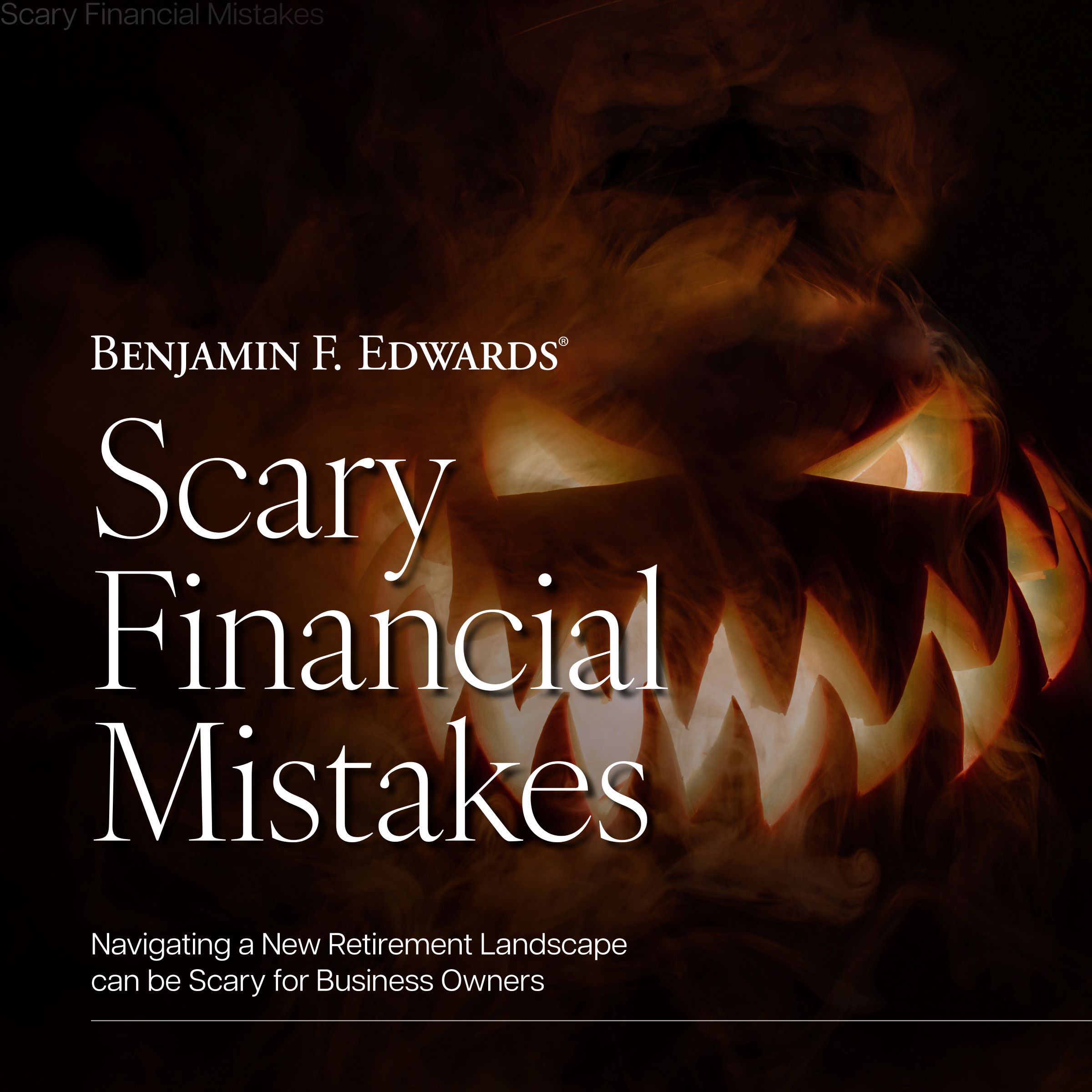By Edward “Ed” V. O’Neal, Senior Vice President and Manager, Retirement Plans
![]() Print This Post
Print This Post
 As we get closer to one of the most popular family holidays of the year, Halloween, thoughts turn to activities like viewing scary movies and finding the perfect Halloween party costume. But for many business owners looking to establish a retirement plan for themselves or their employees, the past few years have seemed like being trapped in a haunted house! Recent retirement plan legislation, such as The Setting Every Community Up for Retirement Enhancement (SECURE) Act 2.0, has significantly shifted the retirement plan landscape for all retirement plan sponsors.
As we get closer to one of the most popular family holidays of the year, Halloween, thoughts turn to activities like viewing scary movies and finding the perfect Halloween party costume. But for many business owners looking to establish a retirement plan for themselves or their employees, the past few years have seemed like being trapped in a haunted house! Recent retirement plan legislation, such as The Setting Every Community Up for Retirement Enhancement (SECURE) Act 2.0, has significantly shifted the retirement plan landscape for all retirement plan sponsors.
While the legislation was massive in scale, there were some important recurring themes throughout the regulation, such as covering more employees in work-based retirement plans and enhancing overall employee retirement saving levels. Adding to the scary aspect for business owners is that these retirement changes are being implemented in phases with some provisions already in place, while others become effective over the next two to three years. A few specific provisions under SECURE Act 2.0 have started to generate some attention in the retirement marketplace.
Enhanced Catch-Up Contribution Limit for Salary Deferral Plans
Generally, retirement plans that permit elective employee salary deferrals also allow employees age 50+ to make special catch-up contributions in addition to the annual elective deferral limit. For example, the 2025 age 50+ catch-up contribution limit is $3,500* for a SIMPLE IRA and is $7,500 for a 401(k), 403(b) or governmental 457(b) plan.
Beginning this year (2025), select participants in SIMPLE IRA, 401(k), 403(b) and governmental 457(b) plans may make an enhanced catch-up contribution to these plans. Specifically, participants ages 60 to 63 can increase their catch-up contribution to $11,250 (instead of $7,500) within 401(k), 403(b) and governmental 457(b) plans. And for SIMPLE IRAs, participants ages 60 to 63 can increase their catch-up contribution to $5,250 (instead of $3,500). However, there are a few things to keep in mind regarding this new contribution provision:
- Recent regulations have clarified that retirement plans currently offering regular catch-up contributions have the option to also include the age 60 to 63 enhanced catch-up contribution, but are not required to.
- The enhanced catch-up contribution limit for SIMPLEs, 401(k)s, 403(b)s and governmental 457(b)s will be indexed for inflation (the cost-of-living adjustment, or “COLA”) annually.
- The new enhanced catch-up contribution for plan participants aged 60 to 63 replaces the regular age 50+ catch-up contribution—participants cannot contribute to both.
- In the calendar year when a plan participant attains age 64, they will be limited to only the regular age 50+ catch-up contribution.
Mandatory Roth Catch-Up Contributions for High Earners
Catch-up contributions in retirement plans for employees age 50+ have been available for some time now and have become an effective way for plan participants to boost their retirement savings. And the previously highlighted new enhanced catch-up contribution (for employees age 60 to 63) now provides even greater opportunity for plan participants to turbocharge their retirement savings.
Historically, plan participants had the option to designate catch-up contributions as pretax or Roth (based on the language of the plan document). SECURE Act 2.0 now mandates that employees with wages over $145,000 will be required to make catch-up contributions as a Roth contribution. This will require business owners with an existing retirement plan that does not currently permit Roth contributions to amend their plan to incorporate a Roth feature, if they intend to permit their high earning employees to take advantage of catch-up contributions. This provision of the SECURE Act 2.0 will be generally effective in 2026, with a grace period for business owners to make a reasonable, good faith effort to comply with the final Roth catch-up regulations until 2027.
While we may still see additional guidance and clarification from the IRS on these exciting new retirement provisions, it’s clear that the next few years will bring some significant changes to the retirement plan landscape for both business owners and plan participants. And although the need to stay abreast of all the retirement changes may seem overwhelming and frightening right now for business owners, these new provisions will make it easier for business owners and employees to meet their retirement goals.
Consider speaking with your financial advisor for any questions related to the impact of recent legislation on employer retirement plans and retirement savings strategies.
IMPORTANT DISCLOSURES: The information provided is based on internal and external sources that are considered reliable; however, the accuracy of this information is not guaranteed. This piece is intended to provide accurate information regarding the subject matter discussed. It is made available with the understanding that Benjamin F. Edwards & Co. is not engaged in rendering legal, accounting or tax preparation services. Specific questions on taxes or legal matters as they relate to your individual situation should be directed to your tax or legal professional.